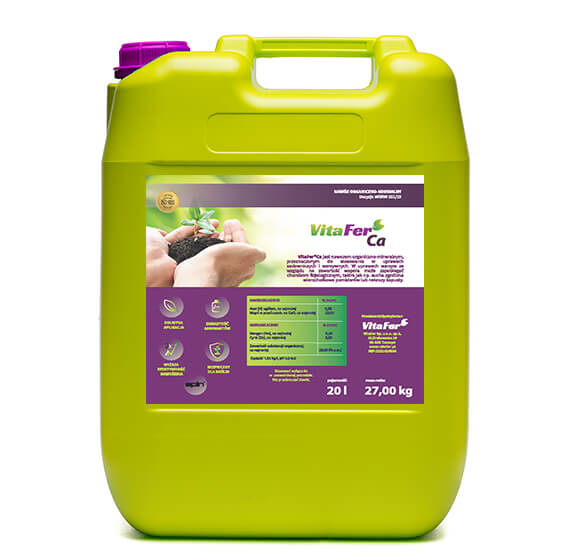Description
Recommendations for use:
– To correct calcium deficiencies in plants either intervening or preventively, especially during periods when its natural uptake by the root system is impaired.
– To improve the quantity and quality of the yield and storability – better flavour, higher fruit firmness, better colouring.
– To strengthen leaf and stem structure.
– As a plant growth booster on acidified soils.
– To provide protection against dry apical rot disease, which is caused by a deficiency of calcium in the plants
– To stimulate the development of the root system by increasing the uptake of nutrients from the soil. Also as an aid against cabbage syphilis.
| MACROELEMENTS | % weight | % volume |
|---|---|---|
| Nitrogen (N) | 0.50 | 0.67 |
| Calcium (CaO) | 15.00 | 20.25 |
| MICROELEMENTS | % weight | % volume |
| Manganese (Mn) | 0.500 | 0.670 |
| Zinc (Zn) | 0.500 | 0.670 |
The role of calcium in plants:
- Regulates enzyme activity in plant metabolic processes (growth, development, yield)
- Mitigates the effects of biotic and abiotic plant stresses
- Has a strong influence on plant cell structure and division
- Increases plant resistance to mechanical damage and damage caused by diseases and pests
- It promotes proper rooting of plants and influences the uptake of adequate amounts of water and nutrients from the soil.
Calcium deficiencies result in:
- Glassy patches on young leaves, fruit, and flowers
- Necrosis on leaf edges
- Dwarfing of flowers
- Dry apical rot of plants
Dosage and timing of application:
| Crop | Dose (l/ha) | Number of Treatments and Application Timing |
|---|---|---|
| Pome Trees | 3-5 | 2-3 treatments: During the period of primordium and fruit growth (BBCH 69-89) until 1-2 weeks before harvest. Perform spraying at intervals of 10-12 days. Carry out a higher number of sprays when there is a high susceptibility of the variety to subcutaneous bitter spot or under conditions of increased risk of this physiological disease |
| Stone Trees | 3-5 | 2-3 treatments: From the onset of fruit setting (BBCH 69), at intervals of 10-14 days |
| Strawberry | 3-5 | 2-3 treatments: From the onset of fruit setting (BBCH 69), at intervals of 10-14 days |
| Tomatoes, Capsicum, Cucumbers | 4-5 | 2-3 treatments: From fruit setting (BBCH 51-69), at intervals of 14 days |
| Cabbage | 4-5 | 2-3 treatments: From the beginning of head setting (BBCH 19-41), every 10-14 days |
| Lettuce, Endive | 4-5 | 2-3 treatments: From the second week after sowing the seedlings (BBCH 41-45), every 10-14 days |
Attention: for spraying orchard plants, use 500-750 l/ha of water in orchards and 400-600 l/ha in strawberry plantations.
The recommended water spray volumes for vegetable crops are: 400-600 l/ha






